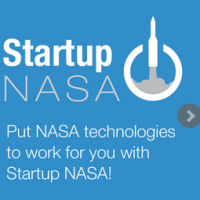NASA’s Technology Patents Spin Off to Startups

Technologies developed by NASA to forge ahead to Mars and other frontiers in space have resulted in some pretty cool spinoffs here on earth. If your kids (or you) are wearing translucent ceramic braces instead of struggling with the old wraparound metal ones, you can thank NASA for your mouth not hurting. One of the best-selling orthodontic products of all time is a result of a company in the private sector working with NASA. It turns out the material developed to shield the infrared antennae of heat-seeking missile trackers was also ideal to make the first invisible dental braces.
Now the government is offering startup companies interested in commercial applications of NASA technology the opportunity to license patented NASA technology with no up front payment. Access to intellectual property rights of the full NASA portfolio of more then 1,200 active patents and patents pending is available through the NASA Technology Transfer Portal. There are 15 categories: aeronautics; communications; electronics; environment; health, medicine and biotechnology; IT and software; optics; robotics, automation and control; and sensors.
There are a few caveats. According to NASA, the offer only applies to companies specifically formed to commercialize licensed NASA technology. The initial licensing fees are waived, and there are no minimum fees for the first three years. However once the product reaches the market, NASA will collect a standard net royalty fee. Although the licenses are non-exclusive, NASA will consider exclusivity if the startup wishes to negotiate. Patents are maintained and protected by the US Government, and NASA technical personnel and facilities can be available to lend additional support.
If you’re interested, the technologies believed to have the most commercial potential are found at the NASA Hot 100 Technologies. How about robotics, predicted by many analysts to be one of the next growth industries? There’s even an R2: “a state-of-the-art, highly dexterous, humanoid robot, Robonaut 2 (R2).”
And remember, the Mars Curiosity rover is a robot with its own Twitter account—@MarsCuriosity—with 2.07 million followers.

